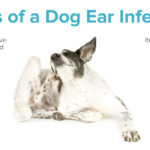What Causes Dogs To Reverse Sneeze
Unraveling the Mystery of Reverse Sneezing in Dogs
Dogs are wonderful companions, bringing joy and comfort to millions of people around the world. However, they also have their quirks and peculiarities that can sometimes puzzle or worry their owners. One such behavior is reverse sneezing, which looks and sounds like a cross between choking, coughing, and inhaling sharply. But what causes dogs to reverse sneeze? In this article, we will explore the possible reasons behind this phenomenon and offer some practical tips on how to deal with it.
What is reverse sneezing?
Reverse sneezing is a reflex action that occurs when a dog’s soft palate and throat muscles contract rapidly and forcefully, causing a sudden inhalation of air through the nose. This creates a snorting or honking sound that may last for several seconds or minutes. Reverse sneezing is not harmful per se but can be disturbing or alarming to both dogs and humans. Some dogs may paw at their face, rub their nose on the ground, or gasp for breath during an episode. Reverse sneezing can happen at any age or breed but seems more common in small dogs, brachycephalic breeds (with short snouts), and those with allergies or respiratory issues.
What causes reverse sneezing?
The exact cause of reverse sneezing is not fully understood, but several factors may contribute to its occurrence:
– Irritants: Dust, pollen, smoke, perfumes, cleaning products, or other airborne particles can irritate a dog’s nasal passages and trigger a reverse sneeze. Dogs who live in urban areas or near highways may be exposed to more pollutants than those who live in rural areas or indoors.
– Excitement: Some dogs may reverse sneeze when they get overly excited or stimulated by something pleasant or stressful. Examples could include meeting new people or pets, playing, exercising, or being in a new environment.
– Post-nasal drip: Dogs who have excess mucus or phlegm in their throat or sinuses may try to clear it by reverse sneezing. This could happen if they have allergies, infections, or anatomical abnormalities that affect their respiratory system.
– Pressure: Dogs who pull on their leash too hard or get pulled by their collar may experience pressure on their neck and trigger a reverse sneeze. This could also be true for dogs who are restrained or carried in a certain way.
How to stop reverse sneezing?
Most cases of reverse sneezing in dogs resolve on their own without any intervention. However, if your dog seems distressed or unable to breathe properly during an episode, you can try the following techniques to help them:
– Calm them down: Speak softly and pet your dog gently to reassure them that everything is okay. Avoid making sudden movements or loud noises that could startle them further.
– Massage their throat: Gently rub your dog’s throat area (where the larynx is) with your fingers or apply some pressure with your palm. This can help relax the muscles and alleviate the spasm.
– Offer water: Give your dog some fresh water to drink or moisten their mouth with a wet cloth. This can help soothe the nasal passages and reduce irritation.
– Block the nostrils: If the reverse sneezing persists for more than a minute, you can try blocking your dog’s nostrils briefly with your fingers or a tissue. This will force them to swallow and restore normal breathing.
When to see a vet?
Reverse sneezing is usually not a sign of a serious health problem in dogs but could indicate an underlying condition that needs medical attention. You should consult a veterinarian if:
– Your dog experiences frequent or prolonged episodes of reverse sneezing
– Your dog shows other signs of respiratory distress, such as coughing, wheezing, or sneezing
– Your dog has a history of allergies, infections, or breathing issues
– Your dog has a foreign object lodged in their nose or throat
– Your dog has recently undergone surgery or anesthesia
A vet can perform a physical exam, run some tests (such as blood work, X-rays, or allergy testing), and recommend a treatment plan based on the underlying cause of the reverse sneezing.
Conclusion
Reverse sneezing may seem odd or worrisome to dog owners, but it is usually a harmless reflex that dogs use to clear their nasal passages. By understanding the possible triggers and techniques to manage it, you can help your dog feel more comfortable and reduce your own anxiety about this behavior. Remember to stay calm, be gentle, and seek professional advice if needed. And don’t forget to give your furry friend some extra love and treats for being such a good companion!



